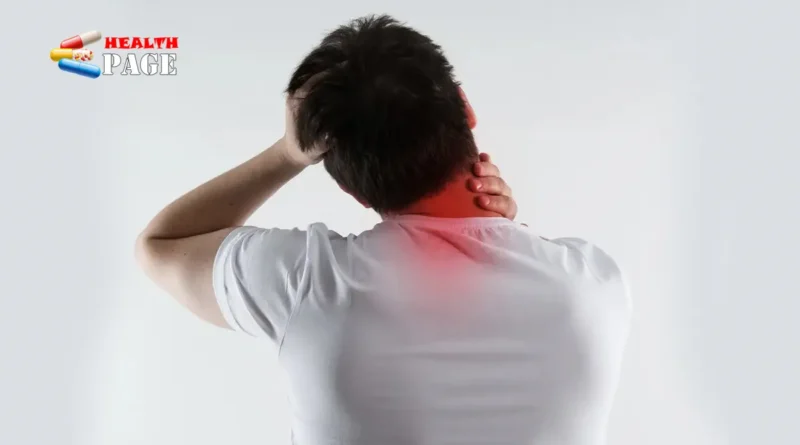The cause of your cervical spine disease is not nerve compression.
The cause of your cervical spine disease is not nerve compression. You made a wrong diagnosis. Did you know that? People suffer from shoulder, neck and waist pain, and it is a waste of money to find the wrong person!
1. Do you also think that your cervical spondylosis is cause by nerve compression?
Yesterday morning a friend of mine said that his cervical spine was compressing the nerves. The muscles on both sides of his cervical spine were very stiff, and the Dazhui point was also very stiff.
In fact, I sometimes wonder why you have always taken so many detours. It may have a lot to do with your misdiagnosis.
Like this patient, he just had muscle stiffness, and then he thought it was a compressed nerve.
Such a wrong diagnosis can lead to three consequences:
1. The more you treat it, the worse it gets. 2. Your cervical spine is very uncomfortable. 3. There is no cure.
In fact, I think if you find the right method and if the diagnosis is accurate, your cervical spine stiffness should be easily resolve.
In many cases, the reason why your treatment is ineffective may be related to the department you visit, your doctor, or your own misunderstanding.
Do you also think that your cervical spine is compressing the nerves?
2. Why doesn’t cervical spondylosis compress the nerves?
1. Nerve compression should be mainly numbness
In fact, when your cervical spondylosis compresses the nerves, there will definitely be a sensory problem and numbness.
If your cervical spondylosis is cause by nerve compression and you don’t have any numbness symptoms. Then there is a high possibility that your cervical spondylosis is not caused by nerve compression at all.
Another one is the treatment for nerve compression, not plaster. This is definitely not something that can be cured by just applying a plaster. This is not the preferred treatment method.
2. The cervical spine compresses the nerves and causes weakness.
For the second one, if your cervical spine is compressing the nerves, then you will definitely have weakness in your hands.
If you have weakness and numbness in your hands, this is a classic symptom of nerve compression.
Just like a patient I treated last year, he also had numbness in his hands, but he did not have weakness in his hands.
So I asked him to check the electromyography , and the result showed that the elbow joint was compressing the nerve. He followed the elbow joint release treatment and recovered in 7 days.
Therefore, only when numbness and weakness in the hands occur at the same time, is it possible that the cervical vertebrae are compressing the nerves.
3. Your
cervical spine CT or MRI must indicate compression of the nerve roots.
This is the gold standard for diagnosing cervical nerve compression. Which means that you must see on T or MRI that the nerve is indeed compressed.
If your CT or MRI results do not show compression of the nerve roots, then there is no doubt that there is no nerve compression.
So if your results don’t show nerve compression, don’t think too much about it and don’t always treat it based on nerve compression.
Your misunderstanding will directly cause your cervical spondylosis to get worse.
3. How to deal with the stiffness and pain of cervical spondylosis (cervical spine disease)?
1. Assess your fascia and
The most likely cause of cervical stiffness is misalignment of your fascia, small joints, or weakness of the deep muscles.
If your cervical spine assessment shows that you have a fascia problem, then you should loosen the fascia , for example through fascia acupuncture, ultrasound, ultrashort wave treatment, etc.
If it is a dislocation of a small joint, you need to do a reduction technique, such as American chiropractic or traditional Chinese medicine.
But there is a principle here, that is, you must train the deep muscles of the cervical spine, because if your cervical spine becomes stiff and painful, there must be weakness in the deep muscles.
If you are in rehab, you can do set suspension exercises .
2. Self-training.
If you want to do some self-training, I recommend doing the neck retraction exercise .
Because you can do neck retraction training at any time and it is very simple.
Step 1. Your face should be perpendicular to the ground, and your chin should not be raise or too low.
Step 2. Place your index and middle fingers on your chin and move your head back horizontally. Remember, you are not lifting your head, just moving it backward horizontally.
Step 3: Hold for 10 seconds until you can’t push anymore.
You can do 10 sets each time, which means about one or two minutes, and do it three times a day.
3. Change bad posture
This is something that must be done for all those with cervical spondylosis, especially those with cervical stiffness. More than 90% of cervical stiffness is caused by your bad posture.
Because your first cervical vertebra lowers your head too much, and the second cervical vertebra remains in a certain posture and is more strained.
So you should avoid looking down at your phone or checking your Moments.
The second thing is to avoid working at a desk for long periods of time. That is to say, you cannot keep your cervical spine in such a strained posture for 2, 3, or 4 hours.
It’s actually very simple, can you do it?
Is this how you treat it?
Is this how you treat it? Is spondylosis incurable? Have you found a good treatment for your cervical spondylosis? Are you still worried about your cervical spondylosis and not being able to find a good doctor? You can also talk to me and I will give you some good methods and suggestions.


Pingback: Bone Hyperplasia: Is It Caused by Too Much or Too Little Calcium?